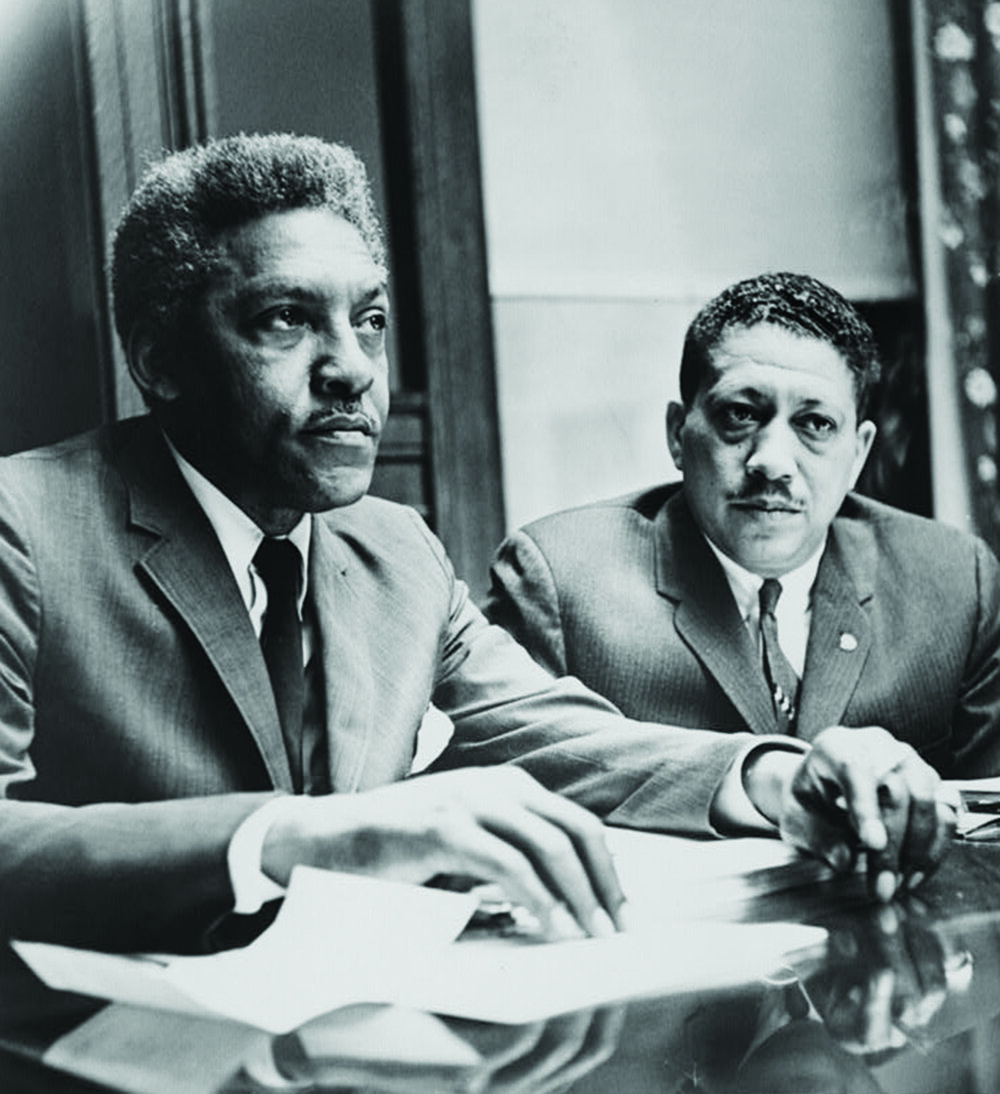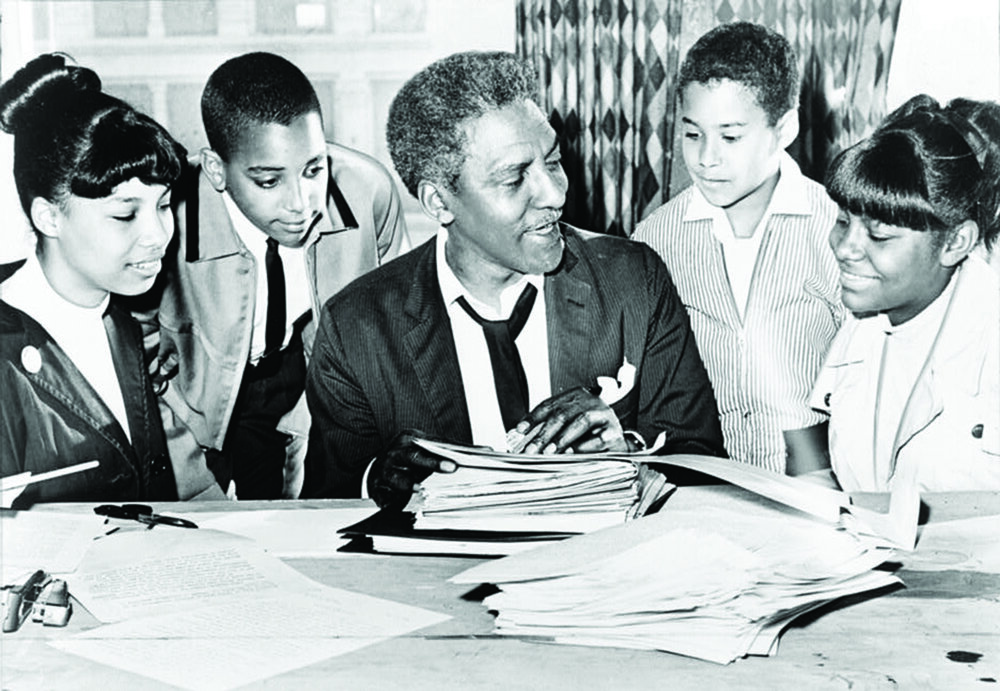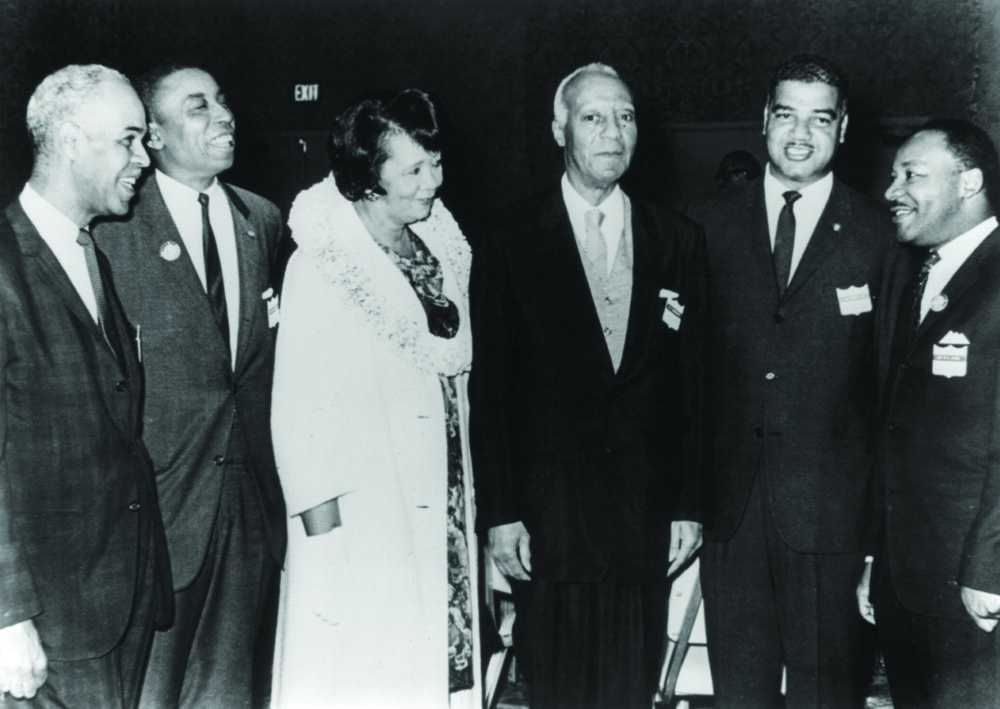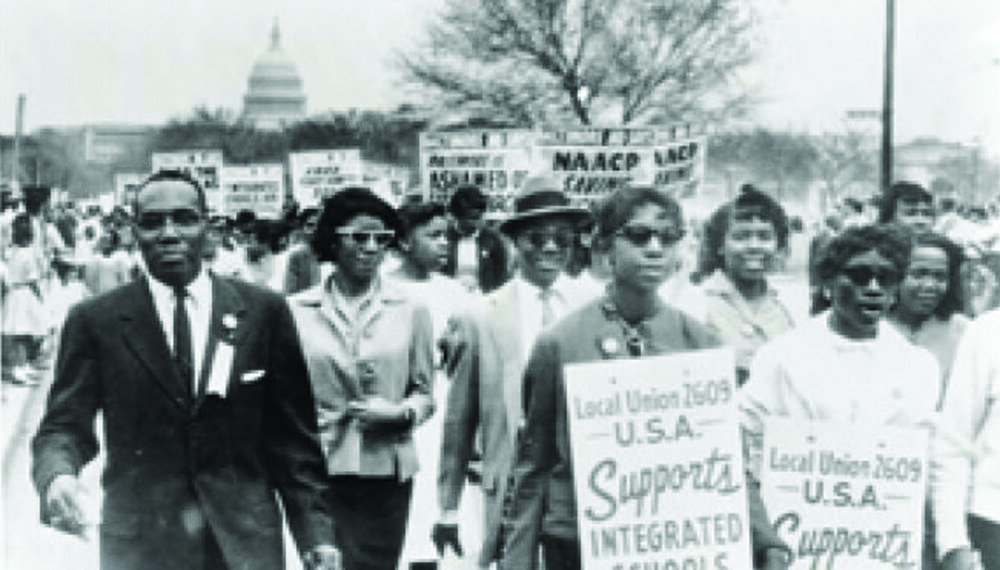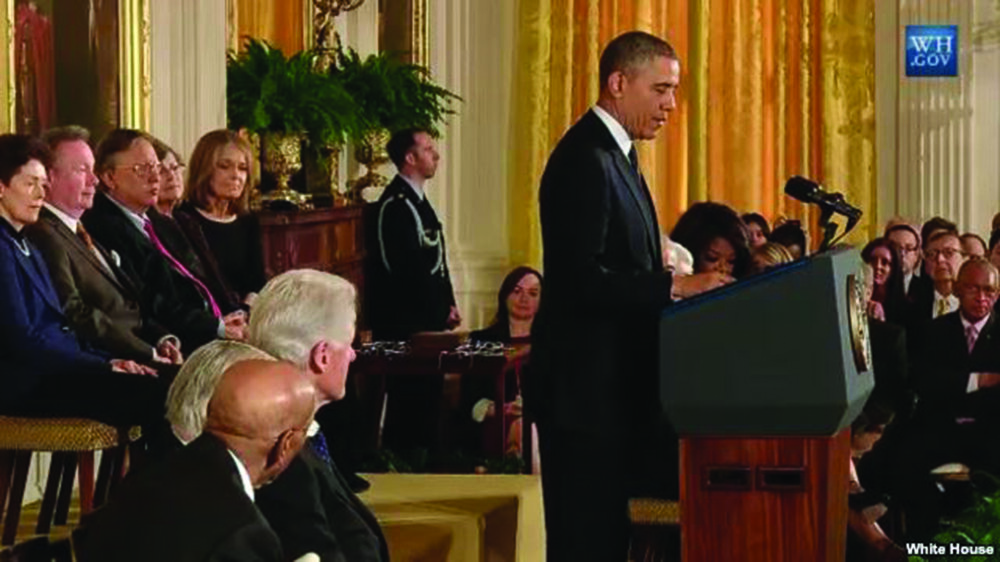Bayard Rustin, Man Of Many Faces
Posted by Gunnar Rice on Apr 15th 2020
Ronald Reagan praised Bayard Rustin’s “moral courage” after the gay civil rights activist’s death in 1987. An anti-gay praising a gay black rabble-rouser who advised Martin Luther King? The 80s were wild, I know, but this wild? At face value Reagan and Rustin’s backgrounds appear to be polar opposites, but Rustin was a man of many faces, most of them self-contradictory.
Born March 17, 1912, Rustin was raised by his grandparents in West Chester, Pennsylvania, deep into Quaker country, and it was his religion’s pacifism that shaped young Rustin’s worldview. But even as a young pacifist, Rustin enjoyed getting rough and tumble on the football field, where the left tackle was legendary for taking down opponents and then, looking down as the dazed rival pulled himself together, reciting poetry. He was as tough as he was smart, and he had a sense of humor, all of which helped him become the go-to activist of his age.
In fact, Rustin was organizing even before the civil rights era. His first protest was while in college, at at Ohio’s historically black Wilberforce University. A boycott to improve the cafeteria’s gruel-like menu, this action was small potatoes compared to Rustin’s eventual March on Washington, but it was indicative of the sacrifices Rustin was willing to make for his causes. It’s also indicative of the consequences he faced. The protest was a success, yes, but Rustin was soon expelled.
The year was now 1937 and Rustin decided to join his sister in Harlem in 1936 at the tail end of the neighborhood’s famed renaissance. Not yet famous in activist circles, Rustin made ends meet as a singer at “Cafe Society,” a 58th Street favorite that touted itself as “the wrong from place for the right people.” It was during this time that Rustin aligned himself with the Youth Communist League, but he left in 1941, when European Communists made clear they would focus their energies on inevitable war overseas, instead of uplifting black people in the States.
Already under FBI surveillance, Rustin soon enlisted with the Fellowship of Reconciliation, a non-violent activist group led by Reverend AJ Muste, and Rustin proved indispensable in spreading the group’s message around the country. He was essentially Muste’s right hand and Rustin definitely practiced what he preached, particularly in his protests against conscription. “War is wrong,” Rustin wrote in his refusal to enlist. “Conscription is a concomitant of modern war. Thus conscription for so vast an evil as war is wrong.” The government replied by jailing Rustin for two years, from February 1944 until June 1946.
Undeterred Rustin jumped back into the fray after his release, traveling to India to expand his non-violent philosophy and bolstering his reputation among the left. But he had other, more private struggles too, namely a 1953 arrest for having sex with another man. Muste, Rustin’s intellectual mentor and emotional father figure, wasn’t having it and forced Rustin from the F.O.R. Though he felt betrayed, Rustin didn’t lose his determination or grit and rapidly joined forces with A. Philip Randolph, laying the foundation for the labor organizing he would undertake in later years.
For now, Rustin saw a kindred spirit in Martin Luther King, a younger but much more prominent activist. King was organizing the Montgomery Bus Boycotts and Rustin, without invitation, showed up at King’s house to offer his services. King wasted no time accepting and for years the men were a seemingly unstoppable duo. King was the face, Rustin was the brain, pulling strings behind the scenes and making sure the various actions went according to plan, all leading up to planned protests at the 1960 party conventions, a move meant to pressure the parties to take a firm stand against segregation and other forms of racial discrimination. Congressional leaders were intent on stopping the men and dispatched black Congressman Adam Clayton Powell to do their dirty work. And he did, threatening to tell the world that Martin Luther King and Rustin were gay lovers. Though the protest went on, Rustin was once again relegated to the sidelines. But that would change in 1963, as Rustin organized the March on Washington for Jobs and Freedom.
An ambitious undertaking, Rustin and his allies planned to bus hundreds of thousands to Washington to show a united front against racism. White leaders were obviously worried, and Strom Thurmond, legendarily bigotted Senator from South Carolina, thought he could derail the action by reminding the public that Rustin preferred the company of men. He was wrong. Black people may not have liked Rustin’s homosexuality, but they hated Thurmond more. Rustin was again at the top of his game, taking center stage as he was recognized as the historic events ringleader. Nothing could stop Rustin now. Except Rustin himself.
The next five years brought massive change to the nation and to Rustin’s life. MLK was gunned down in 1968 in Memphis, there at Rustin’s urging, and the Civil Rights Act had been passed in 1964, a pivotal moment for the movement and one that sent Rustin off in a new direction. He and his allies had made great strides with boycotts and marches, but Rustin now made clear he thought it was now time to go from protest to politics. “The country's 20 million black people [cannot] win political power alone. We need allies,” he wrote in the February 1, 1965, edition of Commentary magazine. “We are challenged now to broaden our social vision, to develop functional programs with concrete objectives.”
This move from the streets to the establishment estranged Rustin from his former allies, and pitted him against the rising black nationalist movement. Rustin felt this self-segregation ran contrary to earlier struggles. Black and whites needed to work together, he said, and made this point by joining A. Philip Randolph’s coalition with white-dominated labor movement and, just as controversially, by paling around with President Lyndon Johnson, a relationship that led the famously anti-war Rustin to keep mum on the increasingly deadly Vietnam War. He also became staunchly pro-Israel and opposed affirmative action, all of which aligned him with the growing anti-communist, neo-con movement that would deliver Reagan to the White House while alienating him from his civil rights comrades.
To Rustin, blacks needed to “behave” and make alliances. To the growing black power movement, Rustin was an Uncle Tom in bed with Uncle Sam. Stokely Carmichael said Rustin was “anti-black,” while writer Amiri Baraka described him as a “big gun of white oppression.”
Rustin himself was well-aware of the divide he was straddling: he admitted to a friend in the mid-60s that his new alignments were as much a matter of individual well-being as they were about being politically pragmatic. “ You get tired after a while and you have to come home to something comfortable and something you can count on.” Rustin remained a leading figure in the labor movement for years to come, his work with white power brokers tarnishing his image among blacks for years to come.
Enemies aside, Rustin still charted his own course, traveling the world to raise consciousnesses and spread the pacifist message, keeping his distance from natural allies all the way. For example, though Rustin marched in the Gay and Lesbian March on Washington in 1979, Rustin still refused to contribute to an anthology of black writers in 1986. “I did not ‘come out of the closet’ voluntarily—circumstances forced me out,” he wrote. “While I have no problem with being publicly identified as homosexual, it would be dishonest of me to present myself as one who was in the forefront of the struggle for gay rights.” Rustin died one year later, of perforated appendix. He was 75-years old.
In 2013, at the White House, President Obama, our nation’s first black president, honored Rustin with a posthumous Presidential Medal of Freedom, the States’ highest honor. “Fifty years after the March on Washington he organized, America honors Bayard Rustin as one of its greatest architects for social change and a fearless advocate for its most vulnerable citizens,” said Mr. Obama, speaking the truth but also ignoring Rustin’s at times self-contradictory approach to progress.
So, where does that leave Rustin’s legacy today? Is he a civil rights icon whose influence changed the face of America? Or was he a sell-out who kowtowed to neocons who kept a roof over his head? Well, why can’t he be both? This is America, after all, and, as Rustin himself said, “I believe in social dislocation and creative trouble,” two tenets that made him both a flashpoint and a folk hero.


